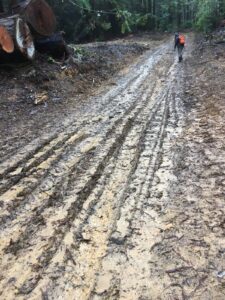cross-posted from Ende Gelande
Lützerath, 08.01.2023
The action alliance “Lützerath Unräumbar” has announced massive resistance against the destruction of the village of Lützerath at the edge of the Garzweiler II open pit lignite mine. In view of the acute threat of eviction of the village, various actors of the climate justice movement have joined forces to form the alliance. Together with the activists, who have occupied Lützerath for two years, they want to defend the village and oppose the expansion of open pit mining in order to prevent the climate crisis from worsening. For the 17.01.2023 “Lützerath Unräumbar” has called for a united day of action. Already in the coming days, individual groups of the alliance want to resist the currently ongoing preparations for the eviction and against the demolition of the village.
Luka Scott, spokesperson for “Lützerath Unräumbar” (Ende Gelände), comments:
“Germany has just again failed to meet its far too lax climate targets because too much coal is being burned. But instead of finally phasing out coal immediately, Lützerath is to be destructed. This will set off a new climate bomb – with catastrophic consequences. And while the lignite excavator is heading straight for Lützerath, the first ship carrying liquid fracking gas has arrived in Wilhelmshaven. Yet liquid gas is just as much a climate killer as coal. In Lützerath we will stop these climate crimes. We from the alliance Lützerath Unräumbar will fight for every tree, for every house, for every meter in this village. Because whoever attacks Lützerath, attacks our future.”
RWE wants to demolish Lützerath to get to the coal seam underneath. In this way, the energy company wants to mine 280 million tons of lignite in Garzweiler alone. The Green Minister for Economic Affairs in North Rhine-Westphalia, Mona Neubaur, and her party colleague, Minister for Economic Affairs Robert Habeck, cleared the way for this after talks with RWE. Yet several scientific studies prove that this is not necessary to secure the energy supply. Instead, the mining and burning of lignite, which is particularly harmful to the climate, would make it impossible to comply with the 1.5-degree limit and become an obstacle to the necessary energy transition.
Soraya Kutterer, also spokesperson for “Lützerath Unräumbar” (Extinction Rebellion) explains:
“The federal government is under lobby influence, this is no secret. Through this influence for the profit interests of the large corporations, the lignite under Lützerath is to be dredged. This will exceed the 1.5 degree limit for Germany. Together we fight for the preservation of Lützerath, the preservation of our livelihoods and against the lobbying influence of the fossil industry.”
Dina Hamid, spokesperson for “Lützerath Lebt” adds:
“Since the police operation in Lützerath started last Monday, we realize again why we have not yet got out of coal. Our state protects here with much money and commitment the profits of RWE. But we protect life. We defend Lützerath because we love Lützerath and because we finally want to decide democratically what energy we produce and for what.”
The action alliance “Lützerath Unräumbar” unites very different groups from different spectrums of the climate justice movement, including Alle Dörfer bleiben, ausgeco2hlt, Ende Gelände, Extinction Rebellion, Fridays for Future, Die Kirche(n) im Dorf lassen, Interventionistische Linke, Kohle erSetzen, Letzte Generation, Scientist Rebellion, RWE & Co. Enteignen, End Fossil: Occupy! and Ums Ganze. The fact that they are joining forces and being active over a longer period of time and at the same location is a new quality in the movement for climate justice in Germany.
Contact:
Luka Scott: +49 177 9705757 | Spokesperson of Ende Gelände
Dina Hamid: +49 1575 3980 277 | Spokesperson of Lützerath lebt
Carla Hinrichs: 03023591611 | Spokesperson for Letzte Generation
Here you can find photos of current actions: https://www.flickr.com/photos/194773835@N02/albums as well as https://flic.kr/s/aHBqjAmz6r







